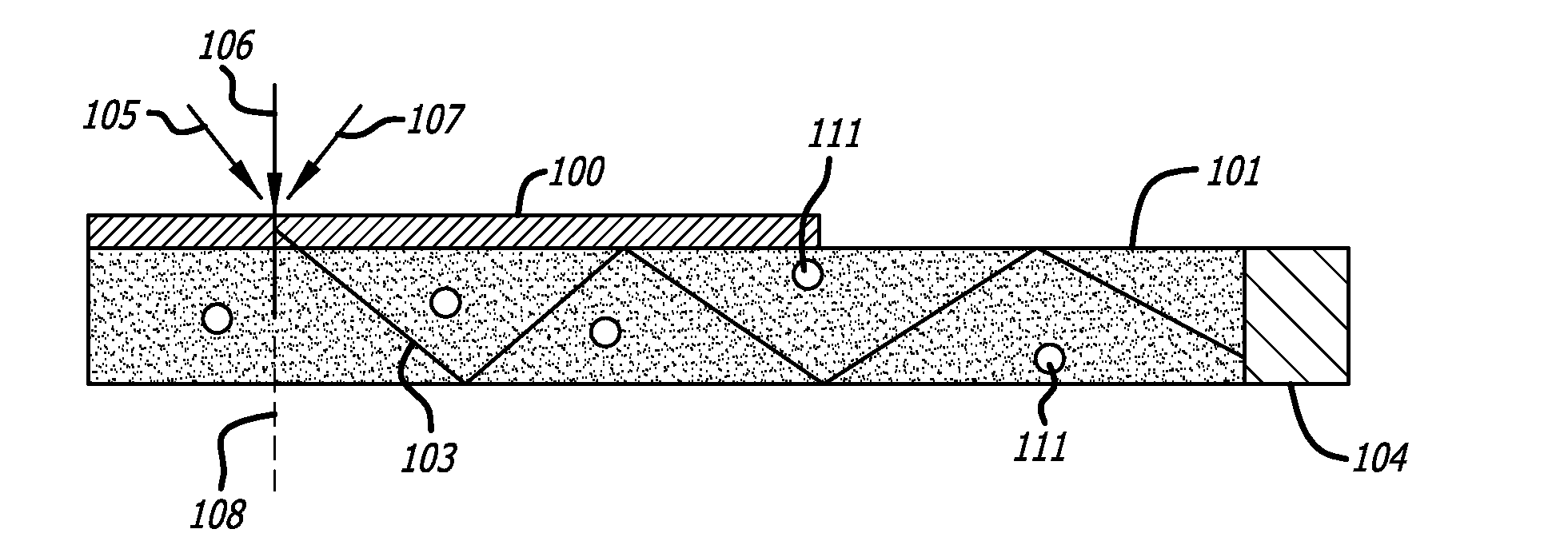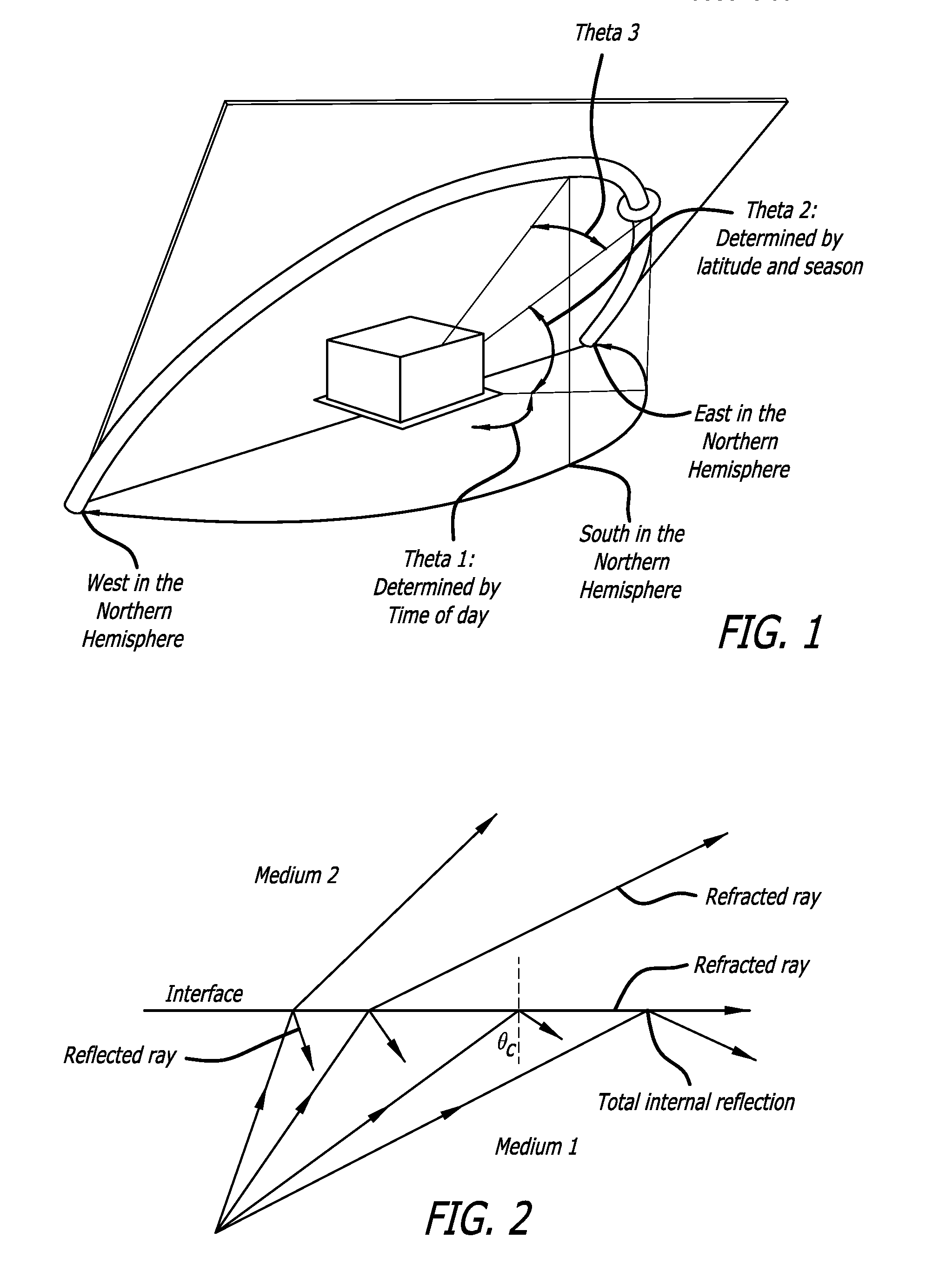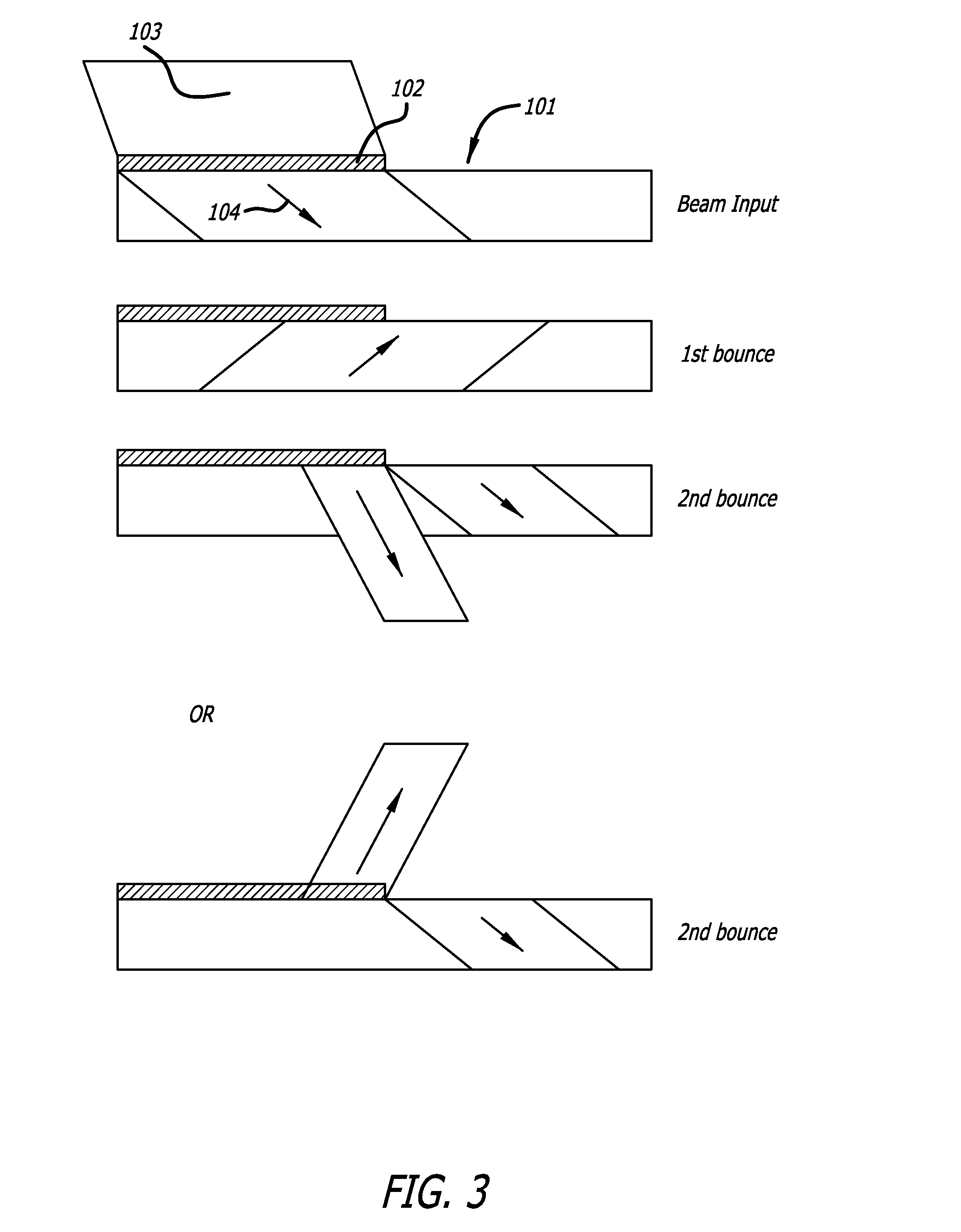Solar energy collection systems utilizing holographic optical elements useful for building integrated photovoltaics
a technology of solar energy and optical elements, applied in the field of solar energy collection systems, can solve the problems of not being commercially successful in the residential and building integrated photovoltaics (bipv) market, tracking systems have only shown marginal payback, and many attempts to improve the collection efficiency of photovoltaics have not been commercially viable, so as to achieve large angle of incidence ranges and improve efficiency
- Summary
- Abstract
- Description
- Claims
- Application Information
AI Technical Summary
Benefits of technology
Problems solved by technology
Method used
Image
Examples
examples
[0114]The embodiments will be explained with respect to preferred embodiments which are not intended to limit the present invention. Further, in the present disclosure where conditions and / or structures are not specified, the skilled artisan in the art can readily provide such conditions and / or structures, in light of the teachings herein, as a matter of routine experimentation.
example
[0115]The following example illustrates the procedures for fabrication of a HOE waveguide solar concentrator. This device allows collection of approximately 60% of the solar energy over the Sun's entire spectrum, which is shown in FIG. 24. This light is then guided into a glass substrate where it is channeled via TIR to a solar cell at its edge.
[0116]In our initial testing and fabrication, the recoding geometry was optimized for 45°. This corresponds to the Sun's elevation angle and for the in-coupling of light into the glass substrate. The wavelength range is centered at 900 nm, where solar cells are most efficient. DCG is characterized by having an extremely high modulation of refractive index (>0.1), and a transparency across the whole solar spectrum of >90%. Haziness can also be controlled to be <1%.
[0117]FIG. 24 shows spectral plots from two different HOE's and a combination of the two. These plots were measured using an UltraScan Pro Spectrophotometer in transmission mode. The...
PUM
 Login to View More
Login to View More Abstract
Description
Claims
Application Information
 Login to View More
Login to View More - R&D
- Intellectual Property
- Life Sciences
- Materials
- Tech Scout
- Unparalleled Data Quality
- Higher Quality Content
- 60% Fewer Hallucinations
Browse by: Latest US Patents, China's latest patents, Technical Efficacy Thesaurus, Application Domain, Technology Topic, Popular Technical Reports.
© 2025 PatSnap. All rights reserved.Legal|Privacy policy|Modern Slavery Act Transparency Statement|Sitemap|About US| Contact US: help@patsnap.com



